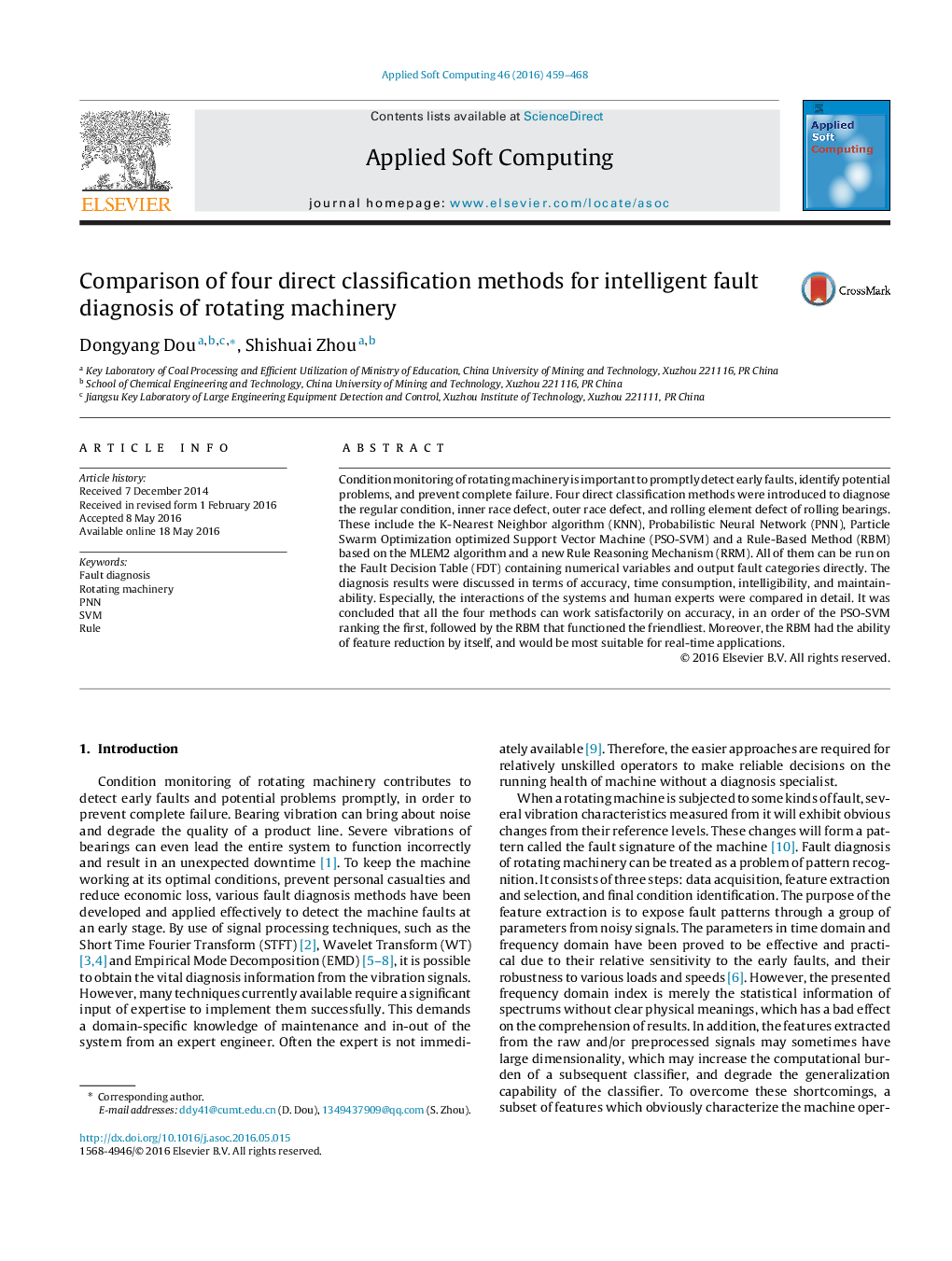| Article ID | Journal | Published Year | Pages | File Type |
|---|---|---|---|---|
| 494684 | Applied Soft Computing | 2016 | 10 Pages |
•A rule-based method was proposed based on MLEM2 and enhanced by a new rule reasoning mechanism.•Eight time-domain and five dimensionless frequency-domain parameters were adopted.•The proposed method had the ability of feature reduction.•The proposed method was an all-rounder compared with KNN, PNN and PSO-SVM as it was very friendly.
Condition monitoring of rotating machinery is important to promptly detect early faults, identify potential problems, and prevent complete failure. Four direct classification methods were introduced to diagnose the regular condition, inner race defect, outer race defect, and rolling element defect of rolling bearings. These include the K-Nearest Neighbor algorithm (KNN), Probabilistic Neural Network (PNN), Particle Swarm Optimization optimized Support Vector Machine (PSO-SVM) and a Rule-Based Method (RBM) based on the MLEM2 algorithm and a new Rule Reasoning Mechanism (RRM). All of them can be run on the Fault Decision Table (FDT) containing numerical variables and output fault categories directly. The diagnosis results were discussed in terms of accuracy, time consumption, intelligibility, and maintainability. Especially, the interactions of the systems and human experts were compared in detail. It was concluded that all the four methods can work satisfactorily on accuracy, in an order of the PSO-SVM ranking the first, followed by the RBM that functioned the friendliest. Moreover, the RBM had the ability of feature reduction by itself, and would be most suitable for real-time applications.
Graphical abstractFigure optionsDownload full-size imageDownload as PowerPoint slide
